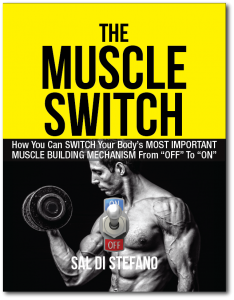We often hear bodybuilders and strength athletes refer to a physiological phenomenon known as “the pump.” This is when a muscle becomes engorged with blood and feels very tight. The pump is a temporary phenomenon; typically lasting about 30 minutes at most, however, it is valued among all those who lift weights to build muscle. As a matter of fact, there is an entire category of supplements designed to maximize this effect, selling millions of dollars of pills and powders a year. Aside from the psychological satisfaction of temporarily adding an inch to your arms and feeling more muscular is there any real benefit to getting a pump?
First, we must examine what actually happens when we get a pump. The pump, which is technically known as transient hypertrophy, occurs when more blood is coming into the muscle than is leaving which causes fluid retention in the interstitial and intracellular spaces of the muscle. That’s it plain and simple. This occurs because the muscles need the oxygen-rich blood to continue their physical pursuit. As the demand for more oxygen and nutrient-rich blood increases, more blood is carried into the muscle faster and faster, which outpaces the muscles ability to carry the blood out. The feeling is a tight, engorged muscle that temporarily looks much larger. This effect can be rather dramatic…so much so that it can completely transform how someone looks for a short period of time.
But is the pump important for muscle growth??? One thing is for sure, the ability of a muscle to attain a pump is a sign that you are hydrated, healthy and that you are able to get full muscle contractions. In other words, the simple fact that you can get a pump means that your body is probably in a healthy environment, which is essential for muscle growth. Try getting a pump when you are sick or dehydrated or deprived of nutrients…almost impossible.
That being said, many wonder if the pump ITSELF is responsible for muscle growth…
When muscles grow they have a higher demand for nutrients and energy. As you continue to get pumps from your workouts your body tries to adapt by increasing the size and number of capillaries, thus increasing the ability of your muscles to access more nutrients and oxygen. This alone creates a more favorable environment for muscle growth. An intense pump also stretches the fascia that encapsulates your muscles. If a fascia is too tight your muscle will not grow
Over time the repeated pumps you achieve result in increased sarcoplasm within the muscles. Sarcoplasm represents all of the non-muscle fiber structures and fluids that are within the muscle. As you increase your ability to store more sarcoplasm your muscles grow. In fact, most of what makes up your muscle size is not actual muscle fiber.
That being said, we still find some athletes with tremendous muscle size who almost never attain a muscle pump when training. Power lifters fall into this category. They lift heavy loads at very low rep ranges, which usually don’t trigger a pump yet these athletes are some of the most massively muscular people you will ever meet.
So what gives? The pump is simply a tool in your muscle-building arsenal. It is important, however, it isn’t the panacea of muscle growth that many of these supplements and magazines promote. Aim for a pump when you are training with lighter weight and a faster pace but don’t worry if you don’t get one when lifting heavy for low reps.
I typically recommend adding a phase of training lasting between 1-3 weeks in which the main goal is to attain maximum muscle pumps. The weights are lighter and the tempo is faster and I find this break in between heavy lifting to be both beneficial to strength goals and to muscle size goals. Since incorporating phases that specifically focus on the pump, my clients have seen dramatic benefits in reaching their strength gain and performance goals. Use the pump as a tool and watch your gains skyrocket.

